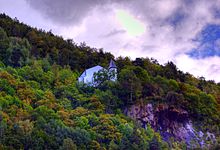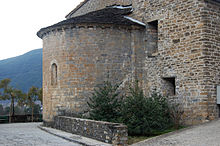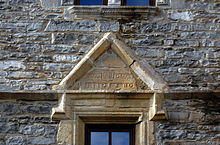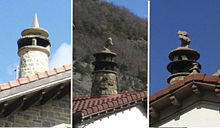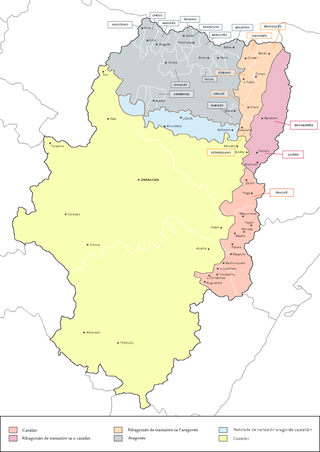
Aragonese is a Romance language spoken in several dialects by about 12,000 people as of 2011, in the Pyrenees valleys of Aragon, Spain, primarily in the comarcas of Somontano de Barbastro, Jacetania, Alto Gállego, Sobrarbe, and Ribagorza/Ribagorça. It is the only modern language which survived from medieval Navarro-Aragonese in a form distinct from Spanish.
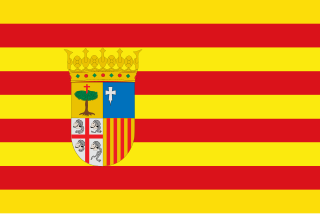
Aragon is an autonomous community in Spain, coextensive with the medieval Kingdom of Aragon. In northeastern Spain, the Aragonese autonomous community comprises three provinces : Huesca, Zaragoza, and Teruel. Its capital is Zaragoza. The current Statute of Autonomy declares Aragon a historic nationality of Spain.

Huesca, officially Huesca/Uesca, is a province of northeastern Spain, in northern Aragon. The capital is Huesca.

Zaragoza, also called Saragossa in English, is a province of northern Spain, in the central part of the autonomous community of Aragon. Its capital is the city of Zaragoza, which is also the capital of the autonomous community. Other towns in the province include La Almunia de Doña Godina, Borja, Calatayud, Caspe, Ejea de los Caballeros, Tarazona, and Utebo.

Jaca is a city of northeastern Spain in the province of Huesca, located near the Pyrenees and the border with France. Jaca is an ancient fort on the Aragón River, situated at the crossing of two great early medieval routes, one from Toulouse to Santiago de Compostela and Pau to Zaragoza. Jaca was the city out of which the County and Kingdom of Aragon developed. It was the first capital of the Kingdom of Aragon until 1096 and also the capital of Jacetania.

The Tena Valley is a valley located at the southern side of the Pyrenees, in the Alto Gállego comarca, province of Huesca, and is crossed by the Gállego river from north to south. Its main town is Sallent de Gállego.

Sabiñánigo is a municipality located in the province of Huesca, Aragón, Spain, capital of the comarca of Alto Gállego. Formerly, the region was called Serrablo, hence the demonym "serrablese". Sabiñánigo is at an altitude of 780 m and lies 52 km from Huesca.

Sallent de Gállego is a municipality located in the province of Huesca, Aragon, Spain.
Santa Cilia is a municipality located in Jacetania, province of Huesca, Aragon, Spain. It is 14 km from the town of Jaca between the River Aragon and the national highway N-240.

The Col du Pourtalet, El Portalet or Portalet d'Aneu is a mountain pass and border crossing in the Pyrenees, between France and Spain. The pass reaches an elevation of 1,794 m (5,886 ft), and links the Ossau and Tena valleys.

Cartirana is a municipality located in Aragon, Huesca, Spain. It is approximately 15 km northwest of Jaca.
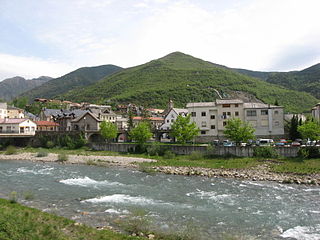
The Gállego is a river in Aragon, Spain, one of the main tributaries of the Ebro River. It has a watershed of over 4,000 square kilometres (1,500 sq mi), with a total length of 193.2 kilometres (120.0 mi).

The Aragonese language has many regional dialects, which can be grouped by valley or larger comarca areas. The area where Aragonese is spoken has quite a rugged relief and is generally sparsely populated with many tracts and valleys pretty isolated from each other. In the literature about the language, the term dialect is ambiguous and can be used to refer to well-known valley varieties, such as cheso or ansotano. Aragonese speakers can be classified into four groups or main dialectal areas following Francho Nagore: Western, Central, Eastern, and Southern. There is a centuries-old diglossia that has favored the lack of unitary awareness among Aragonese speakers; in areas where the language has been best preserved, Aragonese speakers often use local names for their dialect.

Gavín is a Spanish locality situated in the municipality of Biescas.. The locality is at 974 Metres in altitude and is located in the Tena Valley. Its name seems to come from the Latin anthroponym Gapius.

Unión Deportiva Biescas is a Spanish football team based in Biescas, in the autonomous community of Aragon. Founded in 1945, it currently plays in Primera Regional – Group 2, holding home matches at Campo de Fútbol del Polideportivo Fernando Escartín Coti.
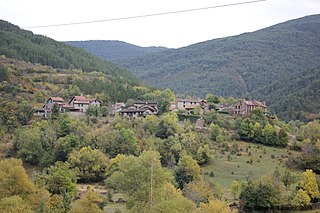
Villanovilla is a Spanish settlement belonging to the municipality of Jaca, in the Jacetania, province of Huesca, Aragon.
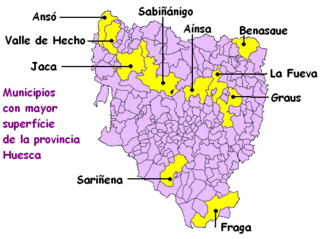
Bescós de Garcipollera or Bescós de la Garcipollera is a Spanish settlement belonging to the municipality of Jaca, in the Jacetania, province of Huesca, Aragon. It is located in the valley of the Garcipollera.
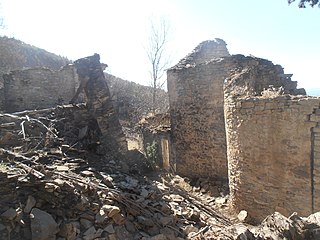
Bergosa is an unpopulated settlement belonging to the municipality of Jaca, in the region of Jacetania, province of Huesca, Aragon. It is part of the Garcipollera.

Acín is an unpopulated village in Spain, within the municipality of Jaca, in the province of Huesca. It is located in the valley of the Garcipollera, in the Aragonese region of the Jacetania.

La Garcipollera, also known as Garcipollera Valley, is a small area of the Aragonese Pyrenees, within the Jacetania, in the province of Huesca, practically coinciding with the basin of the Ijuez river, a tributary of Aragon. It is characteristic because most of its villages were depopulated during the 20th century.




